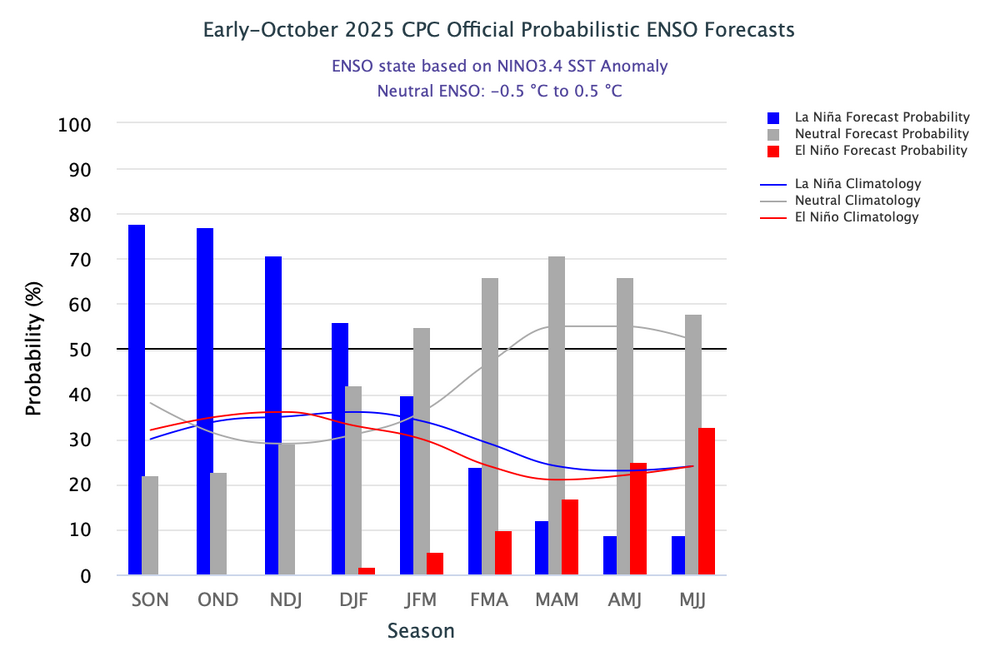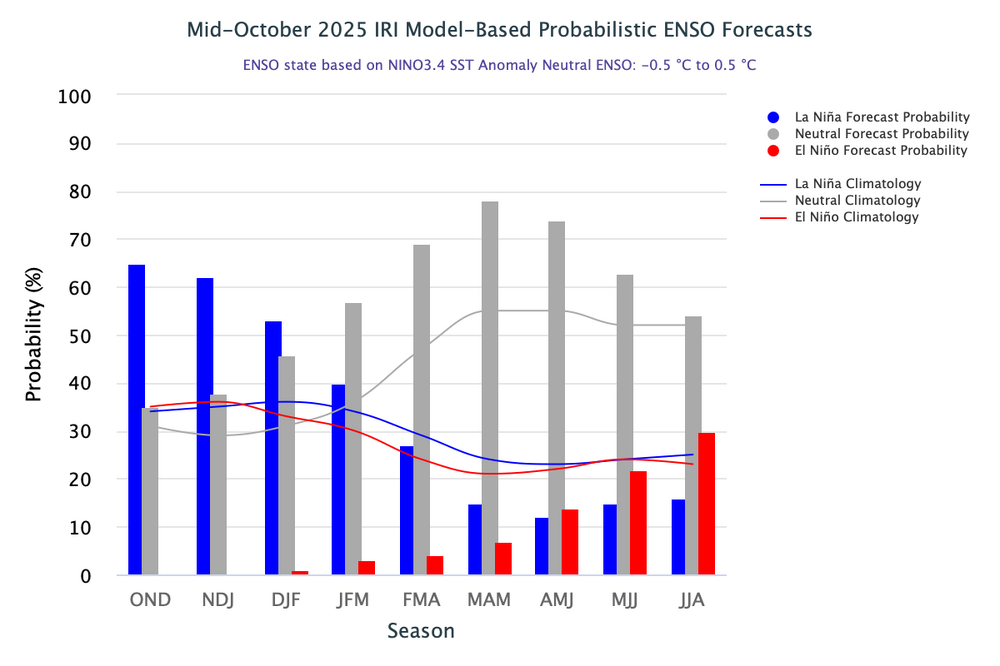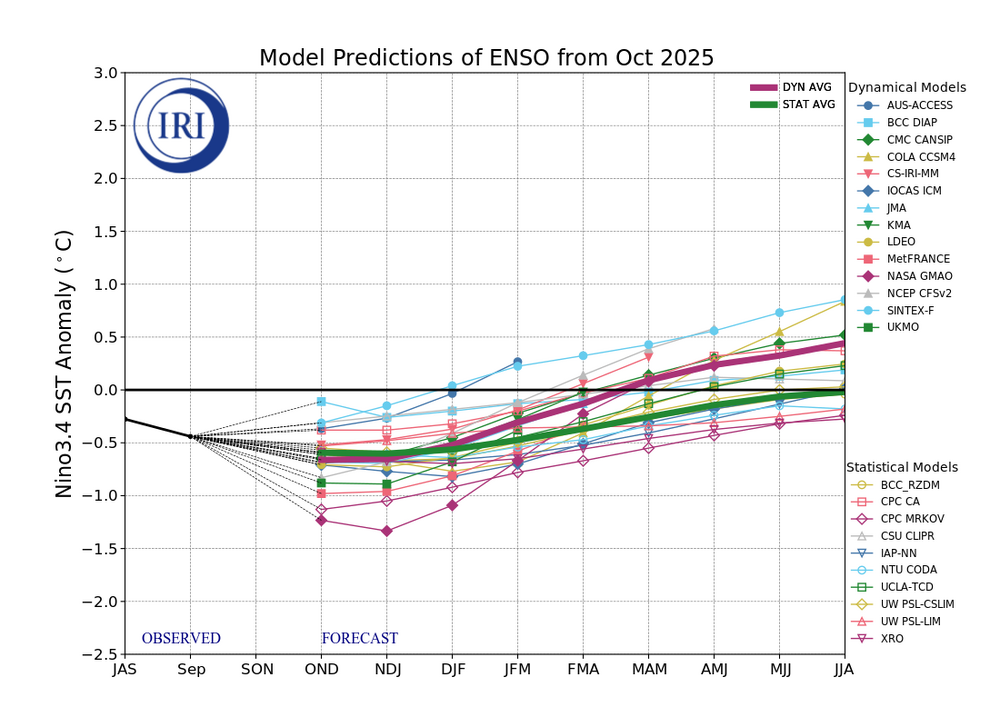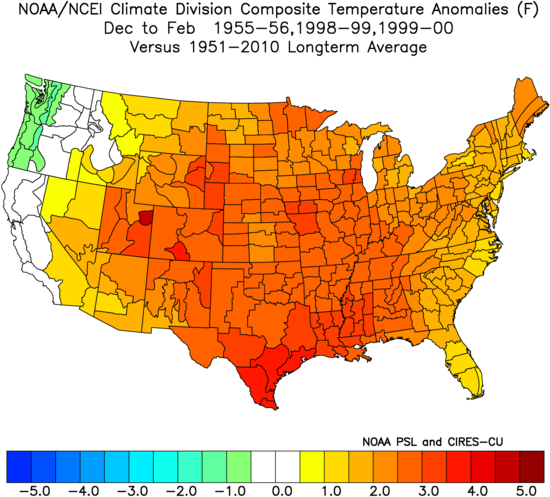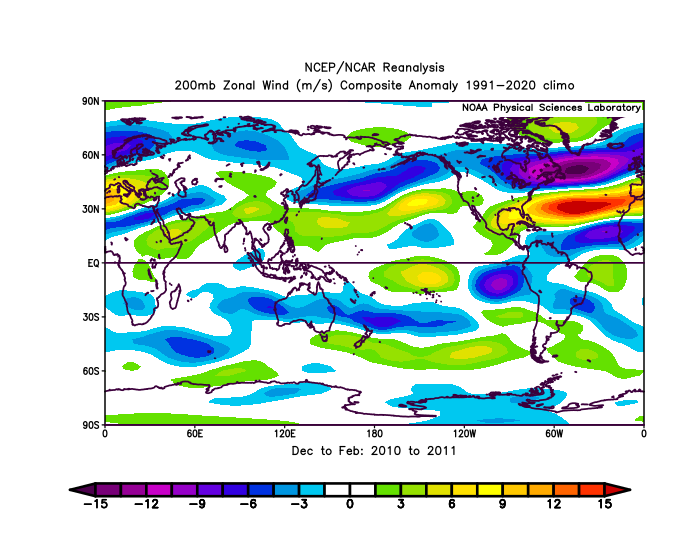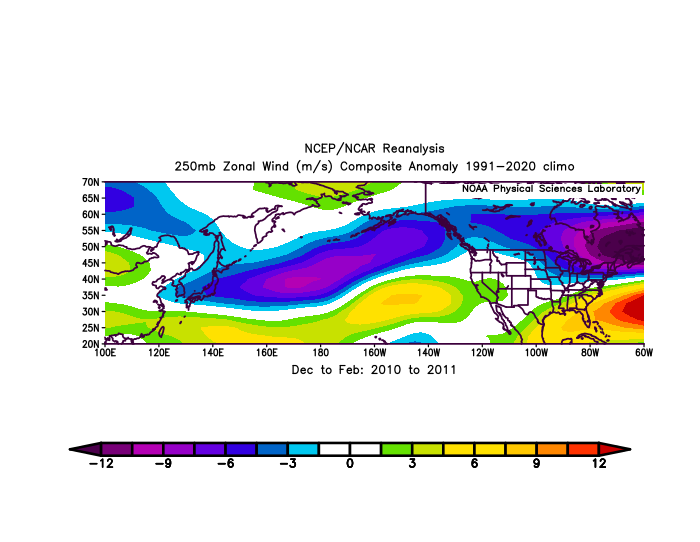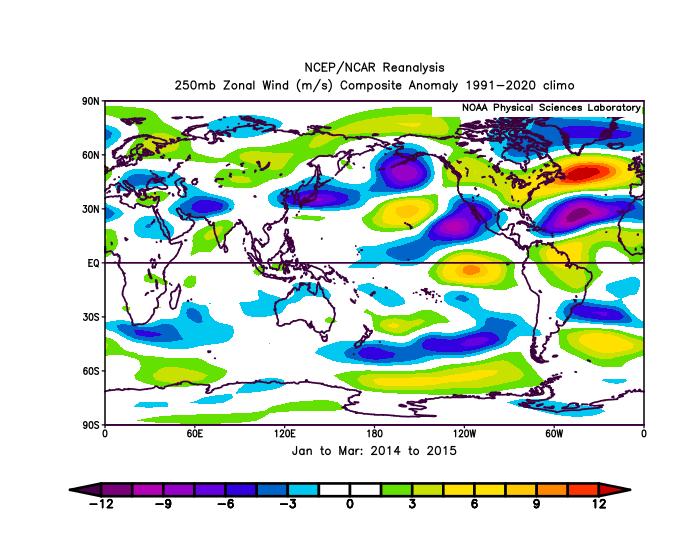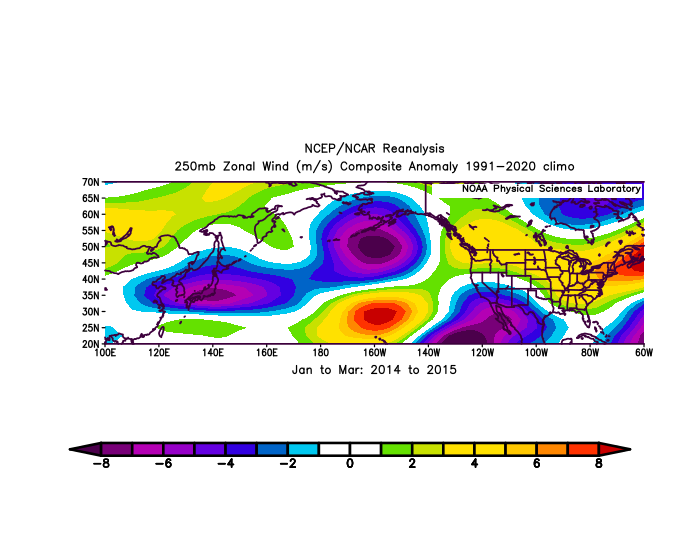
PhiEaglesfan712
Members-
Posts
1,072 -
Joined
-
Last visited
Content Type
Profiles
Blogs
Forums
American Weather
Media Demo
Store
Gallery
Everything posted by PhiEaglesfan712
-
2025-2026 ENSO
PhiEaglesfan712 replied to 40/70 Benchmark's topic in Weather Forecasting and Discussion
Anyone know where NOAA moved their ENSO ONI product? All I know is that the ASO value is -0.5 from this: https://www.cpc.ncep.noaa.gov/products/analysis_monitoring/lanina/enso_evolution-status-fcsts-web.pdf -
2025-2026 ENSO
PhiEaglesfan712 replied to 40/70 Benchmark's topic in Weather Forecasting and Discussion
83 is also a +PDO, and so was 95. They can be thrown out. 1955, 1973, and 2010 were strong la ninas. They can be thrown out as well. 1950 and 2000 are the only analogs that make sense on that list. -
2025-2026 ENSO
PhiEaglesfan712 replied to 40/70 Benchmark's topic in Weather Forecasting and Discussion
The 2003-05 period is going to be nearly impossible to replicate, in terms of ACE. We had the one-year ACE (2005), two-year ACE (2004-05), and 3-year ACE (2003-05) records set. Also, most Cat 5 storms in one year (2005) and 5 years (2003-07), and until it was tied these last few years, the 2-year, 3-year, and 4-year Cat 5 records. (The 5-year record can be tied next year with one, and broken with 2.) I'd even argue that the record stretch began in 1998, maybe even 1995. We had six 175+ ACE seasons in 11 years from 1995-2005. In the 20 years since, we've only had 2 (2017 and 2020). -
2025-2026 ENSO
PhiEaglesfan712 replied to 40/70 Benchmark's topic in Weather Forecasting and Discussion
And don't forget that we also got the volcanic cooling from Pinatubo, which helped fueled the snowy winters of 92-93, 93-94, and 95-96. Then again, it's highly unlikely we're going to get something like Pinatubo the rest of this decade. So, we're going to have to hope this next el nino flips the PDO positive or the Pacific jet becomes slow again (like 2009-10/2010-11 or 2013-14/2014-15). Are you sure the PDO is -1.31? I see -2.40 as the value for October 2025 (actually lower than the -2.33 in September) on NOAA: https://www.ncei.noaa.gov/pub/data/cmb/ersst/v5/index/ersst.v5.pdo.dat -
2025-2026 ENSO
PhiEaglesfan712 replied to 40/70 Benchmark's topic in Weather Forecasting and Discussion
The only "fast starts to winter, then died in January" were 89-90 and 07-08. Technically, you could argue 05-06 and 20-21, but those had a blockbuster return in February. -
2025-2026 ENSO
PhiEaglesfan712 replied to 40/70 Benchmark's topic in Weather Forecasting and Discussion
ASO 2025 RONI: -0.78 -
2025-2026 ENSO
PhiEaglesfan712 replied to 40/70 Benchmark's topic in Weather Forecasting and Discussion
14-15 had a cold November, though. It was more like December was the outlier warm month. I think that had to be 90-91. That was a wall-to-wall warm winter, which continued into spring and summer. Almost like a 11-12 redux. -
2025-2026 ENSO
PhiEaglesfan712 replied to 40/70 Benchmark's topic in Weather Forecasting and Discussion
Should be February 22, 1929. Also, if NYC doesn't get a 10-inch snowstorm, it will be the 9th out of 10 seasons without a 10-inch snowstorm (only 2020-21 had a snowstorm >10 inches). I think it will be the first time that NYC hasn't had a 10-inch snowstorm 5 years in a row, breaking a tie with 2016-17 to 2019-20. -
2025-2026 ENSO
PhiEaglesfan712 replied to 40/70 Benchmark's topic in Weather Forecasting and Discussion
The thing I worry about with your composite is that in those 3 years (2011, 2016, and 2021), only one of the 9 winter months that followed (January 2022) produced a good cold and snowy month. The rest of the months were blowtorches. -
-
2025-2026 ENSO
PhiEaglesfan712 replied to 40/70 Benchmark's topic in Weather Forecasting and Discussion
I think 2017 is the only exception, with the historic cold 2nd half of December/first half of January. We stayed overnight (might have been 2 nights) at AC for my sister's 25th birthday, and it was way too cold to go on the Boardwalk. That year, we didn't get the warm-up until mid-January, and we all know about that record warmth in February. Then, of course, the cold/snowy pattern came back for March and April. -
2025-2026 ENSO
PhiEaglesfan712 replied to 40/70 Benchmark's topic in Weather Forecasting and Discussion
Wait, the 1991-2020 average is only 122? I thought it would be somewhere around 140, considering how active 1995-2005 was. I guess I can lower the baseline for a hyperactive season to 175. That will give us 13: 1 2005 247.65 2 1933 235.785 3 1893 231.0738 4 1995 227.5513 5 1950 227.1413 6 2004 226.94 7 1926 225.7788 8 2017 224.8775 9 1961 196.95 10 1998 181.8838 11 2020 180.3725 12 1955 178.585 13 1999 177 -
2025-2026 ENSO
PhiEaglesfan712 replied to 40/70 Benchmark's topic in Weather Forecasting and Discussion
2017-18 and January 2022 are the only times really that the coastal areas got good snow since the mid-2010s el nino. But 2009-10 to 2015-16 (if you take out 2011-12 and 2012-13) was a great run for the coastals (this is Atlantic City's snowfall): 2009-2010 0.0 0.0 0.0 0.0 0.0 12.6 8.9 36.6 T 0.0 0.0 0.0 58.1 2010-2011 0.0 0.0 0.0 0.0 0.0 20.9 13.4 3.7 T 0.0 0.0 0.0 38.0 2013-2014 0.0 0.0 0.0 0.0 T 3.3 18.8 6.1 15.6 T 0.0 0.0 43.8 2014-2015 0.0 0.0 0.0 0.0 T 0.4 4.8 9.8 7.4 0.0 0.0 0.0 22.4 2015-2016 0.0 0.0 0.0 0.0 0.0 0.0 16.7 3.9 5.1 1.8 0.0 0.0 27.5 -
2025-2026 ENSO
PhiEaglesfan712 replied to 40/70 Benchmark's topic in Weather Forecasting and Discussion
We didn't get the early start to the season this year. The season was quiet until mid August this year, and was pretty much a one-off (with Erin) until Gabrielle. -
2025-2026 ENSO
PhiEaglesfan712 replied to 40/70 Benchmark's topic in Weather Forecasting and Discussion
The last real -EPO/-WPO winter was 2014-15. We did get a nice -WPO interval in winter 2021-22: 2021 11 04 -1.31 2021 11 05 -20.98 2021 11 06 -7.63 2021 11 07 3.39 2021 11 08 8.04 2021 11 09 -32.10 2021 11 10 -93.68 2021 11 11 -125.89 2021 11 12 -99.82 2021 11 13 -60.12 2021 11 14 -25.64 2021 11 15 -13.71 2021 11 16 -25.31 2021 11 17 -40.49 2021 11 18 -41.37 2021 11 19 -65.80 2021 11 20 -101.84 2021 11 21 -89.64 2021 11 22 -89.38 2021 11 23 -114.97 2021 11 24 -60.54 2021 11 25 3.63 2021 11 26 -8.78 2021 11 27 -23.90 2021 11 28 18.52 2021 11 29 60.52 2021 11 30 73.79 2021 12 01 44.70 2021 12 02 10.69 2021 12 03 57.56 2021 12 04 -11.29 2021 12 05 47.68 2021 12 06 140.61 2021 12 07 152.65 2021 12 08 144.81 2021 12 09 142.25 2021 12 10 94.87 2021 12 11 5.18 2021 12 12 -42.68 2021 12 13 -20.06 2021 12 14 17.25 2021 12 15 27.18 2021 12 16 42.72 2021 12 17 37.61 2021 12 18 -16.18 2021 12 19 -65.67 2021 12 20 -86.62 2021 12 21 -167.98 2021 12 22 -157.53 2021 12 23 -155.67 2021 12 24 -183.65 2021 12 25 -150.32 2021 12 26 -103.17 2021 12 27 -76.73 2021 12 28 -43.84 2021 12 29 -17.47 2021 12 30 -37.54 2021 12 31 -58.02 2022 01 01 -90.22 2022 01 02 -180.61 2022 01 03 -213.31 2022 01 04 -213.68 2022 01 05 -221.87 2022 01 06 -187.22 2022 01 07 -144.26 2022 01 08 -122.83 2022 01 09 -86.36 2022 01 10 -42.81 2022 01 11 -19.79 2022 01 12 -27.41 2022 01 13 -27.77 2022 01 14 -27.47 2022 01 15 -54.76 2022 01 16 -89.03 2022 01 17 -127.34 2022 01 18 -163.56 2022 01 19 -171.84 2022 01 20 -163.62 2022 01 21 -108.57 2022 01 22 -35.04 2022 01 23 4.34 2022 01 24 40.36 2022 01 25 34.18 2022 01 26 -41.09 2022 01 27 -73.77 2022 01 28 -77.14 2022 01 29 -81.85 2022 01 30 -99.66 2022 01 31 -128.64 2022 02 01 -154.42 2022 02 02 -138.45 2022 02 03 -85.60 2022 02 04 -35.37 2022 02 05 -38.33 2022 02 06 -28.75 2022 02 07 7.18 2022 02 08 -1.09 2022 02 09 -8.10 2022 02 10 -67.71 2022 02 11 -122.15 2022 02 12 -142.13 2022 02 13 -179.43 2022 02 14 -159.40 2022 02 15 -172.53 2022 02 16 -148.66 2022 02 17 -92.58 2022 02 18 -62.75 2022 02 19 -70.66 2022 02 20 -104.45 2022 02 21 -75.72 2022 02 22 -37.88 2022 02 23 -11.48 -
2025-2026 ENSO
PhiEaglesfan712 replied to 40/70 Benchmark's topic in Weather Forecasting and Discussion
-
2025-2026 ENSO
PhiEaglesfan712 replied to 40/70 Benchmark's topic in Weather Forecasting and Discussion
1955, 1998, and 1999 would have been great analogs if we had a 175-185 ACE season and a strong la nina. We obviously do not have that this year, but for fun, I will do this run: -
2025-2026 ENSO
PhiEaglesfan712 replied to 40/70 Benchmark's topic in Weather Forecasting and Discussion
-
2025-2026 ENSO
PhiEaglesfan712 replied to 40/70 Benchmark's topic in Weather Forecasting and Discussion
I think the huge difference is in 1+2. Last year, we were still in el nino there, which is why I'll never consider it a traditional la nina. This year, we at least have neutral to weak la nina conditions there, which correspond to the rest of the basin. Also, this -PDO is a continuation of the one that started in 2019-20, and went through the 2020-23 la nina. This is more like a 7th year -PDO, than a 2nd year -PDO (that was early in the 2020-23 la nina). -
E PA/NJ/DE Autumn 2025 Obs/Discussion
PhiEaglesfan712 replied to PhiEaglesfan712's topic in Philadelphia Region
As they say, October snow is never good for the rest of the season. 2011 is another famous example, with the snowstorm on October 29, followed by a snowless torch from November 2011-March 2012 (and of course, an early taste of summer in late May 2012, and 100-degree days in July 2012 - the last ones until this June). -
2025-2026 ENSO
PhiEaglesfan712 replied to 40/70 Benchmark's topic in Weather Forecasting and Discussion
-
2025-2026 ENSO
PhiEaglesfan712 replied to 40/70 Benchmark's topic in Weather Forecasting and Discussion
The difference is that we have a deep -IOD and Nino 1+2 is in an actual la nina state. I feel like temps will be well above average and the storms will miss to the North and east. Areas of coastal Maine will probably have the best chance for above average snowfall, maybe Boston. But there will be a very sharp cutoff to the south and west, places like Washington DC and Baltimore are almost certainly going to have another low snowfall season, probably even Philly and NYC. -
Wait, I thought the Nor'easter was in mid-March 1993, not December 1992. I was 4-and-a-half, but I remember my sister being born (12/29/92) and then baptized (in January 93) first, before the huge snowstorm, which I think happened on 3/13/93 (when she was 2.5 months old). I do remember my mom telling me about a storm the night before my sister was born (12/28/92), but it missed us well to the south. I think NC got an ice storm, and the Delmarva area might have gotten snow.
- 731 replies
-
- heavy rain
- damaging wind
-
(and 2 more)
Tagged with:
-
We just had 2 nor'easters this past spring (April 11-12 and May 21-22).
- 731 replies
-
- 2
-

-
- heavy rain
- damaging wind
-
(and 2 more)
Tagged with:


